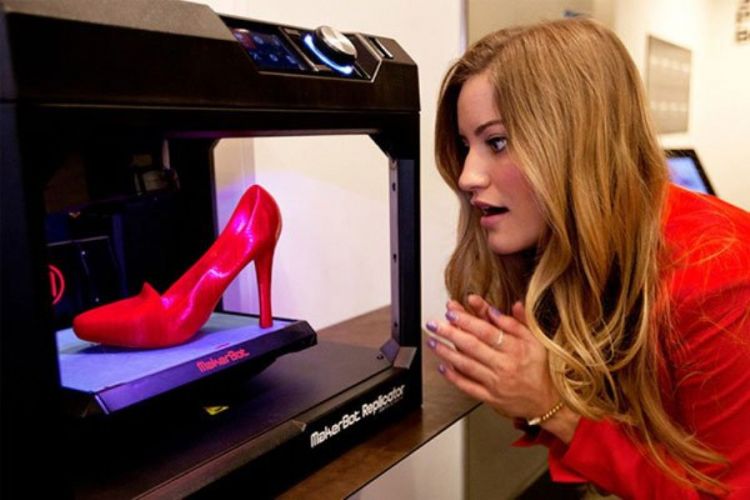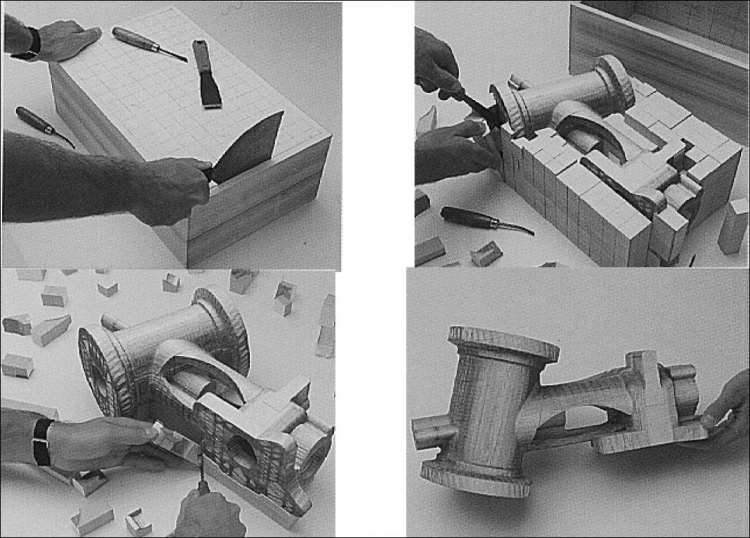Industrial additive technologies: the main advantages of 3D printing

Three-dimensional printing stopped being a young industry with opinions about it divided into suspiciously negative and fantastically fanatical. Perhaps, the "3D printer in every house" slogan will never come to life, but industrial additive technologies already took root in the market and their influence continues to grow.
What is additive technology?
When answering this question, most people think about 3D printers and their types. But, although they are the basis of additive manufacturing, they do not reflect its essence completely.
The inherent technology components also include 3D scanners used in CAD models creation, software that transfers data to the STL format, three-dimensional printing supplies and even post-processing techniques for the end products. Additive technologies are a complex of all of the above, and even more.
 With 3D scanning you can get the most precise data on all parameters. This allows, for example, recreating undersized or oversized object copies with all the details.
With 3D scanning you can get the most precise data on all parameters. This allows, for example, recreating undersized or oversized object copies with all the details.
The 3D modeling software replaces traditional development, making it faster, more accurate and more reliable. In addition, already made models can be conveniently sent to a network, sharing them with other professionals.
Three-dimensional printing materials help making production as waste free and ecological as possible. Initially, polymers were used for 3D printing but gradually, composite powders, engineering plastics, ceramics, sand and various types of metal were added to list of used materials.
Postprocessing is mainly done manually. With the right material choice, there’s no need to change the shape but usually products need painting or some other decoration.
And yet, the basis of additive manufacturing are 3D printers. Generally, they work on the following technologies:
♦ FDM (Fused deposition modeling) is the most common 3D printing type. Here, products are built layer by layer, and melted plastic thread is used as a material.

♦ SLM (Selective laser melting), the leading technology of metal printing. The product is alloyed from metal powders by a laser.
♦ SLS (Selective laser sintering), a printing method that is used to give products a special degree of strength, flexibility, temperature resistance or other special property. It is carried out by selective powdered polymers laser sintering.
♦ SLA (Stereolithography) is a technology that allows printing highly accurate products with the biggest amount of detail. In production, liquid photopolymers congeal under the laser influence.

♦ SGC (solid ground curing), a mask stereolithography method, which consists of applying a photopolymer resin in thin layers, followed by UV irradiation.
♦ CJP (color jet printing) is a type of inkjet digital printing, in which powdery materials of different colors are applied in thin layers one on top of the other.

♦ DLP (digital light processing), digital LED projectors project the entire layer image till the polymer resin solidifies.
♦ 3DP (three-dimensional printing), one of the first methods of inkjet three-dimensional printing with powdery materials.
♦ SHS (selective heating sintering), a method of selective thermal sintering, in which layers of thermoplastic or metal powder are melted by a thermal radiator.
♦ LOM (laminated object manufacturing) is a method of printing objects using lamination with a step-by-step gluing of sheet material.

♦ EBM (electron beam melting), an electron beam melting technology for manufacturing metal objects using electron guns instead of usual melting lasers.
♦ EBFȝ (electron beam freeform fabrication) is a method of electron beam melting; its special feature is minimal amount of machining needed after the object manufacturing.
♦ DMLS (direct metal laser sintering), a technology of liquid-phase laser sintering of a low-melting component in a powder mixture.

♦ IMLS (indirect metal laser sintering) is a laser sintering technology for mixing metal powder with a binder.
Additive technology advantages
3D printing is actively used in production sector, engineering, foundry, medicine, education, science and many other areas. Additive technology advantages are obvious: production speed, its safety, cost and product quality.
Thanks to digital design and easy data transmission, you can minimize the time from having an idea to its embodiment. Safety is a distinguishing feature of both 3D printing process and resulting products.

3D printing allows you creating geometrically complex products and guaranties their density. Moreover, when in traditional manufacturing methods up to 85% of raw materials are lost, additive manufacturing uses them almost completely.
With such obvious advantages, a complete transition to additive manufacturing is only a matter of time.
Learn more at 3D Print Expo 2017







